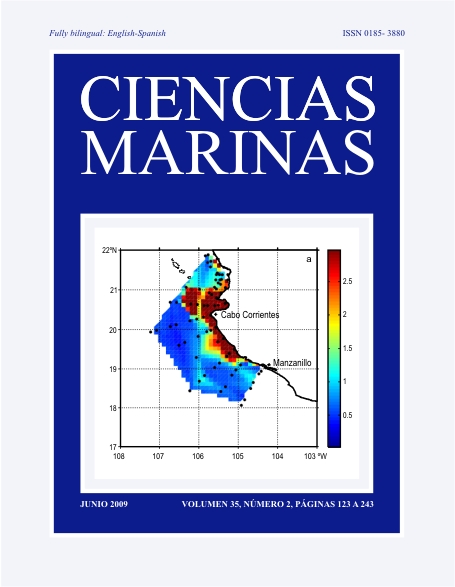Developing a Bayesian framework for stock assessment and decision analysis of the red sea urchin fishery in Baja California, Mexico
Main Article Content
Abstract
The red sea urchin (Strongylocentrotus franciscanus) fishery is of importance to the economy of Baja California (Mexico). The commercial fishery started in the early 1970s as a result of expanding export markets, but has experienced substantial decline in landings and abundance since 1986. Fishery-independent surveys have not been conducted for all fishing areas, thus CPUE and catch data were used to conduct a stock assessment and decision analysis for the red sea urchin stock. The red sea urchin population dynamics was described with the Schaefer biomass dynamic model. Bayesian approaches were used for the estimation of the model parameters and for projecting the population dynamics of the species under different management scenarios, including constant harvest rate and constant catch strategies. This study suggests that the current stock is only 17% of the virgin stock biomass and that, for a constant catch policy, a 10% increase in the current catch rate could potentially cause the collapse of the fishery in 20 years. Simulation results suggested that a constant harvest rate between 15% and 25% would cause the population to recover and maximize the catch in 2024. Higher harvest rate levels would increase the probability of the biomass being less than 40% of the population carrying capacity.
Downloads
Article Details
This is an open access article distributed under a Creative Commons Attribution 4.0 License, which allows you to share and adapt the work, as long as you give appropriate credit to the original author(s) and the source, provide a link to the Creative Commons license, and indicate if changes were made. Figures, tables and other elements in the article are included in the article’s CC BY 4.0 license, unless otherwise indicated. The journal title is protected by copyrights and not subject to this license. Full license deed can be viewed here.

